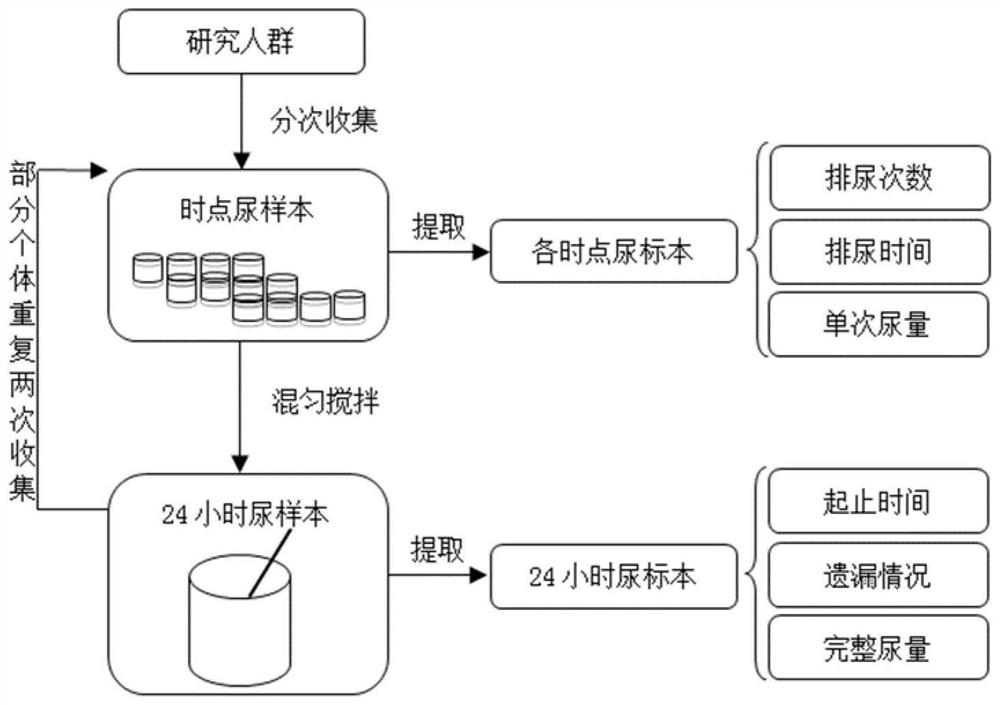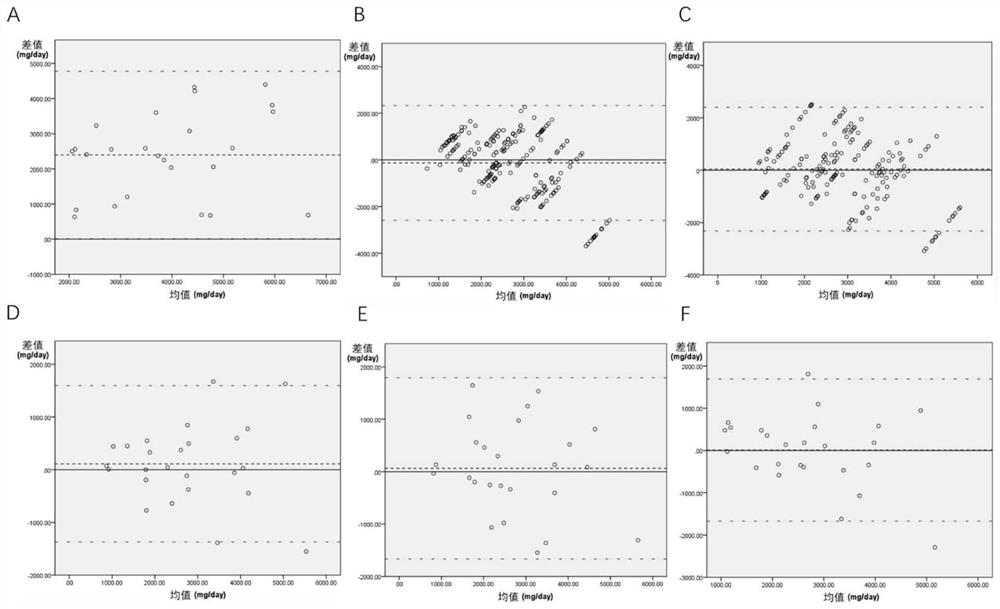Method and device for measuring 24-hour urine sodium discharge amount of children and adolescents
A 24-hour, measurement method technology, applied in the field of clinical testing, which can solve problems such as poor accuracy, underestimation of actual sodium intake, and deviation of sodium intake
- Summary
- Abstract
- Description
- Claims
- Application Information
AI Technical Summary
Problems solved by technology
Method used
Image
Examples
Embodiment 1
[0064] Example 1 Establishment of 24-hour Urinary Sodium Excretion Measurement Method for Children and Adolescents
[0065] 1. Research object
[0066] A total of 151 children who visited Beijing Children's Hospital Affiliated to Capital Medical University were collected as research objects. The exclusion criteria for the population included:
[0067] (1) Children with renal impairment or renal insufficiency;
[0068] (2) Children treated with diuretics;
[0069] (3) Children with congenital diseases such as congenital hypospadias and congenital heart disease;
[0070] (4) Children with secondary infection after admission;
[0071] (5) Children with acute / chronic heart failure;
[0072] (6) Children suffering from diseases that affect dietary intake (such as malignant tumors, etc.).
[0073] The collected information includes the gender, age, drinking water volume of the above-mentioned groups of people on the day of urine sample collection, whether samples were missed or...
Embodiment 2
[0114] Embodiment 2 The model effect detection that the present invention constructs
[0115] 1. Comparison with the relative deviation distribution of existing models
[0116] 1) method
[0117] The difference between the model estimated value and the measured value is defined as the difference between the estimated value and the measured value of the 24-hour urinary sodium excretion, that is, the estimated value-the measured value. The formula for calculating the relative deviation of 24-hour urinary sodium excretion is as follows:
[0118] Relative deviation = (estimated value - measured value) / measured value × 100% The larger the relative deviation, the worse the consistency between the estimated value and the measured value. Generally speaking, the maximum acceptable relative deviation in practice is generally lower than 30% .
[0119] 2) Results
[0120] The result is as figure 2 As shown, the results show that the existing models based on single time-point urine...
PUM
 Login to View More
Login to View More Abstract
Description
Claims
Application Information
 Login to View More
Login to View More - R&D
- Intellectual Property
- Life Sciences
- Materials
- Tech Scout
- Unparalleled Data Quality
- Higher Quality Content
- 60% Fewer Hallucinations
Browse by: Latest US Patents, China's latest patents, Technical Efficacy Thesaurus, Application Domain, Technology Topic, Popular Technical Reports.
© 2025 PatSnap. All rights reserved.Legal|Privacy policy|Modern Slavery Act Transparency Statement|Sitemap|About US| Contact US: help@patsnap.com



